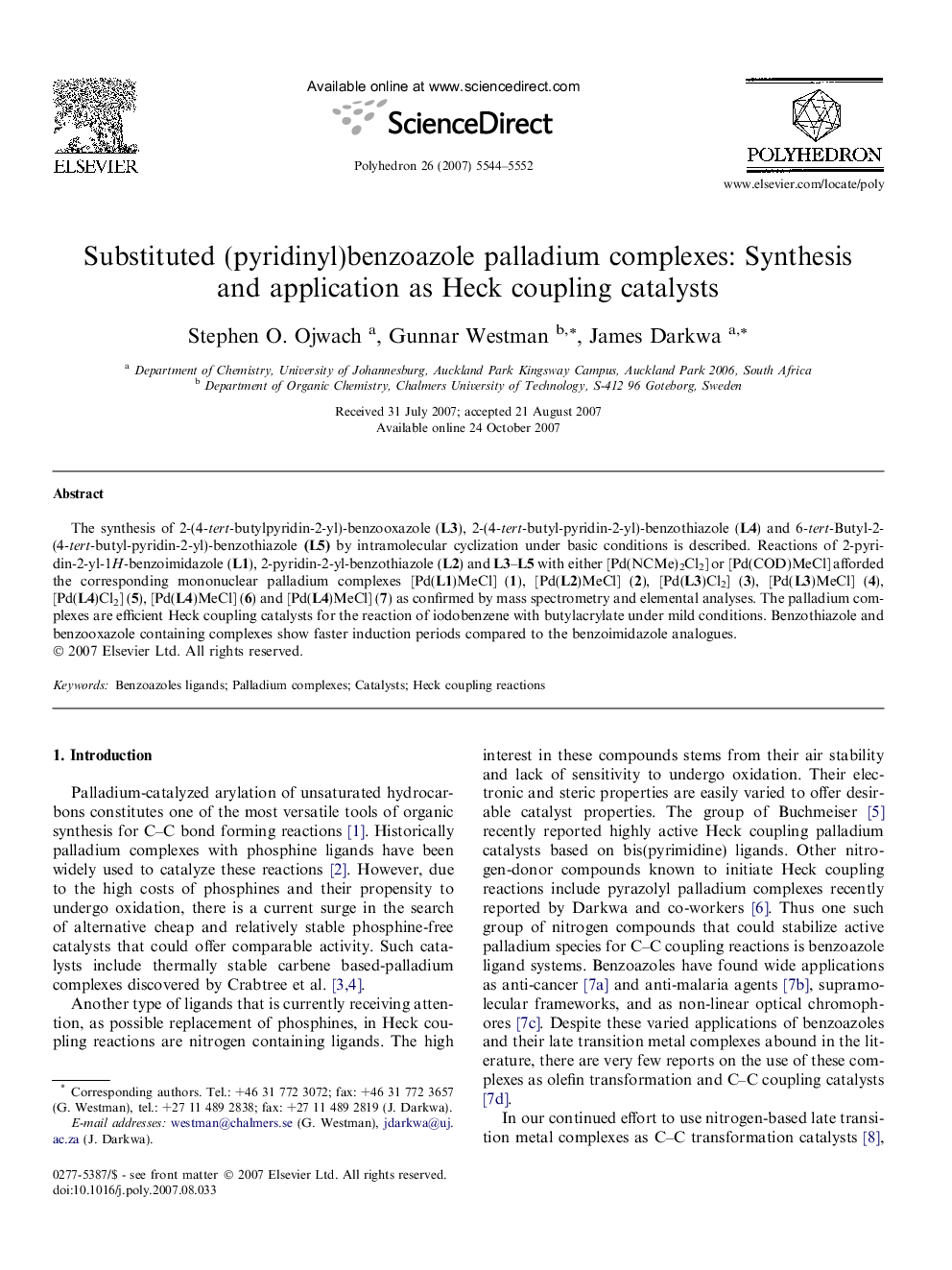| Article ID | Journal | Published Year | Pages | File Type |
|---|---|---|---|---|
| 1335389 | Polyhedron | 2007 | 9 Pages |
The synthesis of 2-(4-tert-butylpyridin-2-yl)-benzooxazole (L3), 2-(4-tert-butyl-pyridin-2-yl)-benzothiazole (L4) and 6-tert-Butyl-2-(4-tert-butyl-pyridin-2-yl)-benzothiazole (L5) by intramolecular cyclization under basic conditions is described. Reactions of 2-pyridin-2-yl-1H-benzoimidazole (L1), 2-pyridin-2-yl-benzothiazole (L2) and L3–L5 with either [Pd(NCMe)2Cl2] or [Pd(COD)MeCl] afforded the corresponding mononuclear palladium complexes [Pd(L1)MeCl] (1), [Pd(L2)MeCl] (2), [Pd(L3)Cl2] (3), [Pd(L3)MeCl] (4), [Pd(L4)Cl2] (5), [Pd(L4)MeCl] (6) and [Pd(L4)MeCl] (7) as confirmed by mass spectrometry and elemental analyses. The palladium complexes are efficient Heck coupling catalysts for the reaction of iodobenzene with butylacrylate under mild conditions. Benzothiazole and benzooxazole containing complexes show faster induction periods compared to the benzoimidazole analogues.
Graphical abstractA series of (pyridinyl)benzoazole palladium complexes have been used to catalyze Heck coupling reactions of iodobenzene and butyacrylate at mild conditions. The catalysts are highly stable and can be used in more than four catalytic cycles without any signs of decomposition.Figure optionsDownload full-size imageDownload as PowerPoint slide
